Growth & Customers
How to build your business on Instagram
Her university tutor told her she was 'too business minded'. But that didn't stop Jess Gohl from becoming a small business success.
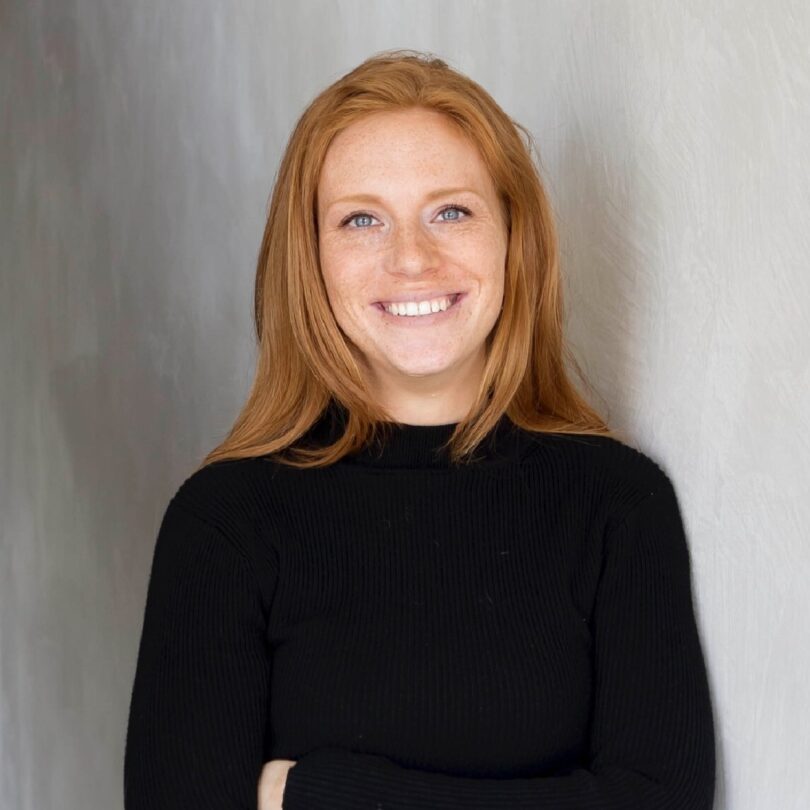
Never miss an episode
Subscribe to the Sound Advice podcast
Subscribe by email and get the Sound Advice podcast delivered to your inbox every two weeks with a ton of related articles, templates and problem solving guides for small businesses so you can put our Sound Advice podcast into practice.
Her university tutor told her she was ‘too business minded’. Her parents said she was mad. But that didn’t stop her from becoming a small business success.
Today, we are meeting the brilliant Jess Gohl, founder of Burnt Toast Designs, a branding design and content studio based in Buckinghamshire.
She is a one-woman powerhouse working with some big-name brands and an impressive client base. Here, she tells us how she built this clever and creative business from the ground up.
Scroll down for the advice:
Turn your creativity into business ideas
Instagram is a great marketing channel for creatives
Find common ground with customers
Get personal in your lead generation
Provide customers with as much information as you can
Learn from experienced professionals in your industry
Unfortunately, creatives sometimes have to justify their prices
Network, network, network
Bex Burn-Callander:
Jess, can we start right at the beginning? How did you set about getting this business off the ground, and what prompted you to do that?
Jess Gohl:
I’ve always done little bits of freelance design and branding, but I wanted more freedom. I’ve always wanted to have my own business.
However, I went for it totally at the wrong time because it was a week before the word ‘Covid’ appeared. But I had to do it and ran with it.
Touch wood, it has all worked out for the best.
Bex Burn-Callander:
So tell me what processes you followed. What did you do first?
Jess Gohl:
I refined what I wanted to do. I loved taking something from research through to seeing it complete. I reached out to everyone and anyone I knew in the industries I wanted to work with. I networked and talked to everyone.
If a friend mentioned they knew someone with an interior design studio or needed help with graphic design or something like that, I made sure that I contacted everyone and said, “Hi, I’m here. This is what I’m doing now.”
I got so many responses, which was great.
Bex Burn-Callander:
When you say networking, how does that look? Does that look like sending messages over LinkedIn? Does that mean taking people out for coffee?
How did you network?
Jess Gohl:
I made sure that I had someone’s email, but personal email rather than info and enquiries addresses. I always made sure I had a contact, whether that was through LinkedIn or elsewhere.
Quite often, it was through previous work experience.
One of my clients, who I work with now, has a very successful interior design business. She’s just set up her online shop, but she’s got an interior design studio.
I met her through my first waitressing job, where she was the events manager, and we’ve stayed in touch ever since.
She reached out to me on Instagram when I said I was doing my new Burnt Toast Design creative studio and showed all my offerings.
I think it’s so important to keep these people in your life, even if it’s not your personal life, but you follow what they do. I’d always followed her and the fantastic work she was doing with her interior design.
It just all fell into place.
You think you’re never going to meet someone when you’re 16 waitressing, but it turns out you do.
Bex Burn-Callander:
That feeds into this whole idea of following your passion because if you’re passionate about what you do for your business, you’re pretty likely to have a network that includes a lot of people that are also into the same stuff or to have at least a pretty good grasp of the wider industry you love.
Jess Gohl:
Yeah, definitely. I found the experience of working I’ve gained over the years valuable. My university degree encouraged everyone to go out and get work experience and internships to find out what you do and don’t want to do.
I think it’s so hard to work out what you want to do at such a young age. But I know a couple of weeks’ work experience allowed me to do a few things I knew straight away weren’t for me.
Turn your creativity into business ideas
Bex Burn-Callander:
Jess, talk to me about bread. Your company name is Burnt Toast. There’s a whole thing about baking on your website, and then you also talk about your infamous bread prints. I want to know all about how it fits into your life.
Jess Gohl:
I’ve always loved baking and always created the most random bakes. My dad gets the wackiest bakes for his birthday. Bless him. Even though I know he just likes simple banana bread.
My bread prints came about in my final year of uni. It was when my tutors told me I was too business-minded for the course.
In my final year, before my final major project, they sat me down and said, “Jess, you’re not artsy enough. You’re not creative enough. You’re too focused on business.”
And I thought, “Right, how can I be super deeper arty and creative?”
For my final major project, I had to analyse and experiment with all sorts of crazy arty stuff. I thought conceptualising stuff like that was beyond my capabilities.
But the baker in me thought of bread and dough. So I painted a slice of bread, printed it, and made a whole book on all these different pieces of bread.
I raided every supermarket for every single type of bread. I’ve got the photos of me walking through this trolley full of bread, looking like an absolute madwoman.
It was in my final exhibition where one of my tutors who told me that I was too business-minded came over to me and said, “Can I buy your prints?”
And I thought, “Yes, success. I’ve proved to them that I can be creative and arty, so I’m going to turn it into a business and sell this art.”
I set up my Burnt Toast Instagram, and I sell them. And people love them. I think they’re a bit mad, but they’re very popular.
Bex Burn-Callander:
I can’t believe they said you were too business-minded. What are you supposed to do with all your talent once you finish your degree? You’re supposed to go out in the world, do art and not make a living?
Jess Gohl:
They were proactive about telling us to get internships and work experience, but they centred it around graphic design.
When I said I’m going to go and get work experience at British Airways, they looked at me as if they were asking, why would you want to do that?
I just thought British Airways as a brand and with such heritage was so interesting. And I wanted to learn about it. And I wanted to annoy my tutors and teachers even more because I was very good at annoying them.
So I wrote my dissertation on airline branding.
Bex Burn-Callander:
So, you narrowed down exactly what you wanted to do and the kind of clients you wanted to work with.
What came next? Was it a website? Was it social media?
How did you start building that customer base beyond the networking stuff?
Instagram is a great marketing channel for creatives
Jess Gohl:
I should have built my website first but did it in the background while running my social media. Instagram was the most significant thing—90% of my clients found me there.
The website is now coming along slowly to full fruition.
Bex Burn-Callander:
Tell me about your strategy. It didn’t feel at all like you were trying to promote yourself, but clearly, it works.
Jess Gohl:
I wanted to create styled photography or packages that would be brand and visual communication, working from everything—from a logo right through to how you visually communicate your brand across social media and on your website.
Everything that encompasses visual communication is what I do. I’ve tried to show that on my Instagram.
On Instagram, I’m being myself and having that personal aspect, but I upload and tag photos with the brands I’m working with. I provide packages where, for example, I’ll work with a lifestyle brand that will send me loads of products and have some big strategy meetings.
We go through everything that they’re targeting or where they want to target or tell me why this isn’t selling and how we can make it sell. I’ll go away and come up with a great strategy.
We’ll do lots of visual mood boards, research through social media and get some analytics going, work out how we can pinpoint a sales point of view or a sales pitch. I will also do all the photography on top of that, and I will send them back all these files, which they’ll have in the background to enhance their communication.
Get trained with Excel
Bex Burn-Callander:
In the last year and a half, what have you learned about yourself that you’re not good at? What are the things you suddenly realise, “I need some help with that,” and how did you solve that issue?
Jess Gohl:
Excel spreadsheets. My dad is a very clever businessman and is always on me. “Jess, have you sorted your spreadsheets out? Have you got all your costs right?”
It’s good that he nags me, as I put it to the back of my mind because I don’t want to deal with it.
But working out the finances, especially for my products, I did so much research I got so many quotes. It’s things like that that have helped, and now I’ve realised how essential spreadsheets are.
I would recommend doing any course on Excel, or if you’ve got a friend that is an absolute whizz and uses it all the time in their job, ask them.
Find common ground with customers
Bex Burn-Callander:
Do you have a written business plan? And if you do, how closely do you follow it?
Jess Gohl:
I have an idea of where I want everything to go, and I have these very extravagant business plans that I’ve made just in case I get the opportunity to pitch it to an investor.
I have my set, almost weekly to-do lists that I make sure I do—even for all the boring admin stuff that’s so important.
Bex Burn-Callander:
Jess, can you tell me about any risks you’ve taken since you started the business? Have you made any bold decisions that have paid off for you and Burnt Toast?
Jess Gohl:
I don’t think I’ve taken any huge risks.
I mean, going alone was a risk. Not having that steady income was a risk.
My parents said, “What are you doing? You’re mad.” I felt like I needed to do it. It was the right time.
I felt like I’d got enough experience out of university and always knew that I would end up doing it.
I just thought, “You know what? You only live once. Do it.”
Bex Burn-Callander:
You might not shout about your clients so much on Instagram, but it only takes a little bit of digging to see you’ve worked for some quite big names like Timberland.
I saw Piglet—I just drool all over all their sheets on Facebook ads all the time.
So how did those meetings come about? Did you track them down? Did they find you?
How did you get in front of these brands?
Jess Gohl:
Timberland found me through a couple of photos I’d taken and then sent me a message on Instagram, which is so funny because you wouldn’t think of it as a tool almost to find huge corporate brand business.
But it does work.
Piglet is one of my biggest clients. I do a lot of work for Piglet. I reached out to them after I drove past their offices and saw their branding.
I thought, “Oh, I know them. I love all their stuff.”
I sent this probably too flowery email about how much I love their staff, ethos and everything they work towards. The founder and CEO, who’s also called Jessica, emailed me straight back saying, “I’d love to work with you,” and that was nearly a year ago now.
Bex Burn-Callander:
That shows that sometimes you have to take the initiative.
There doesn’t even have to be a job on offer. You could just speculatively get in touch and say, “I love what you stand for. Let me do something for you.”
And now they’re one of your biggest clients.
Jess Gohl:
Yeah, one of my biggest clients. I’m so pro putting yourself out there. I think I’m one of those people where I do come across as quite shy, but I’m not scared about asking when it comes to business.
I think if you don’t ask, you don’t get.
The worst-case scenario would be they say no, or they don’t reply to your email.
If you don’t put yourself out there and don’t create these opportunities for yourself, then you’re not going to get very far. You need to be constantly communicating.
I think communication is a crucial thing about any business, but especially a creative business.
Bex Burn-Callander:
You can talk about anything. I suppose what I’m getting from you is that you have all these different connections, and you’re not talking about what you can do for them.
You’re just having a chat about things that you have in common or commenting on cool stuff they’re doing, and that is the foundation for anything business-related and commercial that comes afterwards.
Jess Gohl:
Find common ground. Don’t say, “Here’s my business card,” but “I’ll pop you an email,” or, “Can I have your email?” just to have that contact.
Something might never come of it, but you never know.
Get personal in your lead generation
Bex Burn-Callander:
I want to pick up on that point about the emails because you said, “I know if I haven’t sent enough emails one week because it tends to be a bit slow.”
So for anyone listening who’s just starting or planning, how much time goes into lead generation? How many emails?
I don’t know if you can give me a figure, but how many do you have to send to make sure your pipeline is healthy?
Jess Gohl:
Initially, I had a list of about 150 people, even if they weren’t direct contacts. I knew that they had contacts for the right people I wanted to get in contact with.
I sent out a personal email l to them. Make the email personal to the person and company you are sending the message to.
There is nothing worse than opening an email or message on Instagram that you know has been copied and pasted. Never, ever do that, please.
I sent out a lot of emails. I went through and marked, “Yes, got a reply”, “Yes, follow up”, or “No, didn’t hear from them. Maybe try again later”, or a clear, “No, we’re not interested.”
It’ll track if someone showed a little bit of interest on Instagram, for example.
I keep it at a very steady pace. I wouldn’t say I send out that many these days. Maybe when I get a lead, I’ll send an email out.
Probably two or three a week at the moment.
I’m chasing, trying to tie them down to say, “I want to work with you.”
Now I get people emailing me, which is excellent, and that’s what I wanted. Initially, when I started, I thought, “I wonder if any of these people would ever actually email me,” and now they do.
So, I’m getting there.
Provide customers with as much information as you can
Bex Burn-Callander:
How do you get the balance right between the number of clients?
Because often when you work for yourself, there’s a case of feast or famine. It’s hard to say no. Often, clients want things now, and you maybe don’t have as much time.
So how do you keep that balance right, and how do you also make sure that you’re not too reliant on one client?
Jess Gohl:
In the initial conversations, that initial email has every bit of information, “This is how long it will take. This is how I will do it. This is when we’ll have our next call.”
I think you need to get to the point with stuff like that because otherwise, you will find yourself drowning.
I think it has that expectation as well.
You need to tell your clients, “This is how long it will take me. It’s not going to take me a day to create your brand. This is what I do first. This is what I then do next.”
It’s coming up with a timeline.
I always send out a timeline or a little ‘how it works’ document that I send out depending on what clients want.
I personalise that after initial calls or emails.
Bex Burn-Callander:
That’s such a good idea about the how it works document, because you not only look professional, because I’m presuming you send this thing out and it’s got all your branding on it, but also it must save you time, as you’re not trying to brief a client from scratch.
Jess Gohl:
I always personalise it, and it is always different.
The amount of work also everyone wants is entirely different. It could just be a logo, or it could be a complete branding and social media strategy that will stretch across six months to a year.
So I completely tailor it, and I think the most important thing is keeping it personal to the brand and the person.
Learn from experienced professionals in your industry
Bex Burn-Callander:
I want to ask you a bit about your influences because you’ve mentioned your dad, who nags you about spreadsheets.
So who has the most influence over you in business? Who’s taught you the most, and what have you learned from them?
Jess Gohl:
It’s been a mixture of personal relationships, friends and family.
I know so many people who do so many different things, but I always find it interesting to chat to them about what they’re doing, what they’ve done this week or their work.
My godmother is an incredible designer—she’s always been a massive influence on me. She is a creative director for a massive advertising and design agency in London and globally.
She travels the world and works on these great projects.
When I was still at school, my highlight was when she’d come around, and I’d ask her, “What have you been doing this week?”
And she replied, “Oh. Well, I flew to New York from Monday to Thursday, and then I was in Brazil. Oh, and then I flew to Paris. And I’m working on this project with this brand and this project with this brand.”
And I thought, “Wow. You are amazing.”
I learned that the corporate working in these big agencies wasn’t for me, but she still taught me so much.
She brought me my first Mac for my 14th or 15th birthday. She’d pinched it from her studio that was getting rid of all their old Macs and brought it home for my birthday.
It’s stuff like that that I remember and I love.
I’ve learned from people how to run a business, but I’ve also learned how not to run a business and how not to treat employees. I’ve been through the mill with some quite crazy MDs and things like that.
I can sit back now. Even though I’m only 26, I feel I’ve experienced so much that I would know precisely how, if and when I ever get employees, how I would want to run that side of things as well.
Take time out where necessary
Bex Burn-Callander:
Yeah. It’s great to learn from bad bosses. We all have this list of what not to do, how not to treat people, how you don’t want to be perceived.
Where does your work ethic come from?
Because throughout this whole interview, it’s become clear that you throw your all at everything.
And I know from many conversations that I’ve had with would-be founders, some of them have said they worry that they won’t be able to motivate themselves, be disciplined enough or have the drive.
So, where does that come from in you? Is it innate? Have you worked on it? How did you create that work ethic?
Jess Gohl:
I think I’ve always had it in me. I’ve always worked hard. I’ve always taken criticism or failure to push me. My brother and sister will say, “Oh, she’s always working,” which is kind of true.
I worked hard at school. I wasn’t necessarily the best at anything. I was very that run of the mill—plodded along in the middle, minding my own business. But I took part in a lot of sport, and any extracurricular activity.
I always like to be busy, but I have that side of me where I walk the dog for two hours, where I won’t touch my phone, and have that time to chill. I am very one side business, and this personal side of, “Right. I have my day off”.
I’m pretty strict about it being a day off. I won’t touch my laptop. I won’t touch my phone unless it’s to call a friend.
Bex Burn-Callander:
Most startup founders are not very good at that. They would say that having a business becomes all-encompassing. But do you think you’re able to do that because you’re organised?
Because clearly, you make sure that you meet your deadline, and you’re not working until midnight the following day.
Those two things go hand in hand.
Jess Gohl:
I am pretty particular about getting everything done. I can’t relax if I know I’ve got a big task. I’m not one of those people that think, “Oh, my deadline is on Friday. I’ll do an all-nighter on Thursday.”
I’ve never been that kind of person.
I’m a morning worker. I would instead get up at 5am and work until 2pm, and I will be so much more productive than if I started at 4pm and didn’t finish until 4pm the next day. I still would have got more done, having got up early to do it.
I think it was me working out how I worked, knowing the best ways to be productive and what works for me. I think it’s different for everyone.
I know people who would rather lie in, have a bath, go to the gym, and then start work in the afternoon.
I am useless in the afternoon and evening. I feel you can’t get anything out of me from about 3pm until 7pm. Then maybe I’ll have a look between 8pm and 9pm.
Bex Burn-Callander:
I’m the same between 3pm and 5pm. I’ll keep going back for biscuits and tea.
Can you tell me about a piece of work you’ve done through Burnt Toast that you’re most proud of?
I appreciate this question is a bit like making a parent choose their favourite child, but maybe one that stretched you creatively or commercially. Something that stands out as being a proud moment.
Jess Gohl:
I’m working on a project at the moment that I’m can’t talk about, but that will be my proudest, I think.
I think Piglet has been an enormous eye-opener—it is what I want to be doing. I was so chuffed that I even was given the time of day to discuss working with them, let alone working for them.
Working for them has been hard work, and we’ve put in many hours to bring everything together. You see all the pretty pictures as a result, but there’s so much planning and logistics with the operational side of things, which takes up more time than the photoshoot.
When I’ve sent them an invoice, and I think, OK, I’ve earned that.
Bex Burn-Callander:
Sometimes that’s what you need. That quiet sense of satisfaction that it’s a job well done and you’re paid fairly for the work.
Unfortunately, creatives sometimes have to justify their prices
Jess Gohl:
With the creative side of things, you sometimes have to justify your prices or your worth, which is the one thing that I do that is exhausting.
I still do it now, justifying myself and proving what you can do almost before you’ve done it to clear your quote.
That for me has been a big thing because sometimes, at the end of the day, after shutting my laptop, I have a moment to think—why do people question my worth?
But once you’ve shown them what you can do and show your clients your expertise, then they’re more than happy to pay what you think you’re worth also, which is excellent.
Bex Burn-Callander:
How did you set your pricing as a brand new business, and how much refinement did that take?
Did you have to move up and down a little bit in the beginning?
Jess Gohl:
I based my prices on asking many people that I already knew who was freelancing, had freelanced in the past, or worked within that sort of creative marketing industry in terms of what they would expect to pay someone.
I already had a rough idea, but I just wanted to put feelers out and check that it was.
My feedback from everyone said, spot-on, that’s fine. My most significant learning curve came to payments. Sending invoices and pricing, I make sure I take 50% upfront because I have been stung with one of my first branding clients.
I had about four on the go, and three of them were absolute dreams to work for. But there was one that took my designs and ghosted me.
After a couple of weeks of emails, calling them and messaging them on Instagram, I saw that they were using all my designs and hadn’t paid me. But of course, rookie Jess hadn’t sent an initial invoice or deposit.
I was sending all my invoices after I’d completed all the work. I went and got advice on how to deal with this situation.
I did manage to get a little bit of money out of them in the end, but not what would have been my total price. So, it technically cost me time, and that was a big wake up call for me.
Invest in photography
Bex Burn-Callander:
Do you mind if I ask you to share advice for anyone creative?
Maybe they’re an artist and decided to sell their watercolours, or maybe they embroider, and they are working up a side hustle, but they have a view to making that side hustle their main livelihood.
Jess Gohl:
My main piece of advice, which could be pretty controversial, is to invest in photography.
I think these days, everything is online. Social media is your best friend when it comes to a small business.
You need photography that will stand out, sell your product, and showcase to everyone what you’re doing and what your service is. I think it’s so important these days to find a local photographer, ask for quotes, and work with them to make it affordable.
Bex Burn-Callander:
That’s not the obvious thing that springs to mind, but image is everything now.
Jess Gohl:
I think there are so many online shops and dropshippers.
If you want to sell a product, you need to make it look nice, and you need to sell that product through that one image. You also need that lifestyle imagery to back it up. Make it pop out on a screen.
Everyone’s sat on their screens. Everyone’s on a train bored, scrolling through Instagram on their way home from work, so make it stand out.
Subscribe to Sound Advice on Apple iTunes here.
We are also on Spotify and anywhere else you get your podcasts.
We would love for you to join our community and share your insights and stories. Season two is coming up, and we would love to take your recommendations for guests or even some questions you would like me to ask in the future.
Let us know on Twitter @SageUK using the hashtag #SoundAdvicePodcast, on Instagram @SageOfficial at or in the comments below, and we will get back to you.
If you want to hear more from Jess, check out her bunny bags and bread prints on Instagram at @burnttoastdesigns
Side hustle toolkit
Get your free guide, business plan template and cash flow forecast template to help you boss your side hustle and achieve your goals.
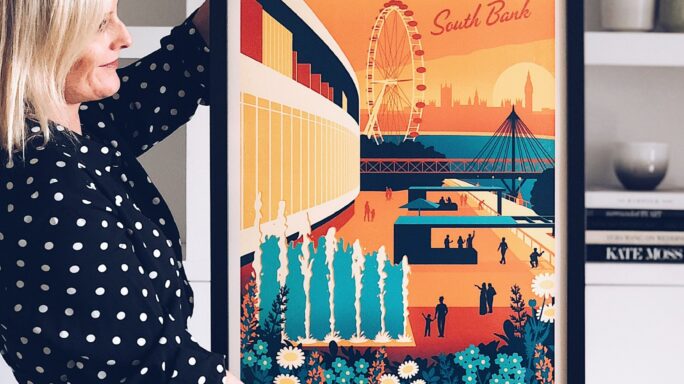
Never miss an episode
Subscribe by email and get Sound Advice delivered to your inbox every two weeks with the Sage Advice newsletter with a ton of related articles, templates and problem solving guides for small businesses so you can put our sound advice into practice.





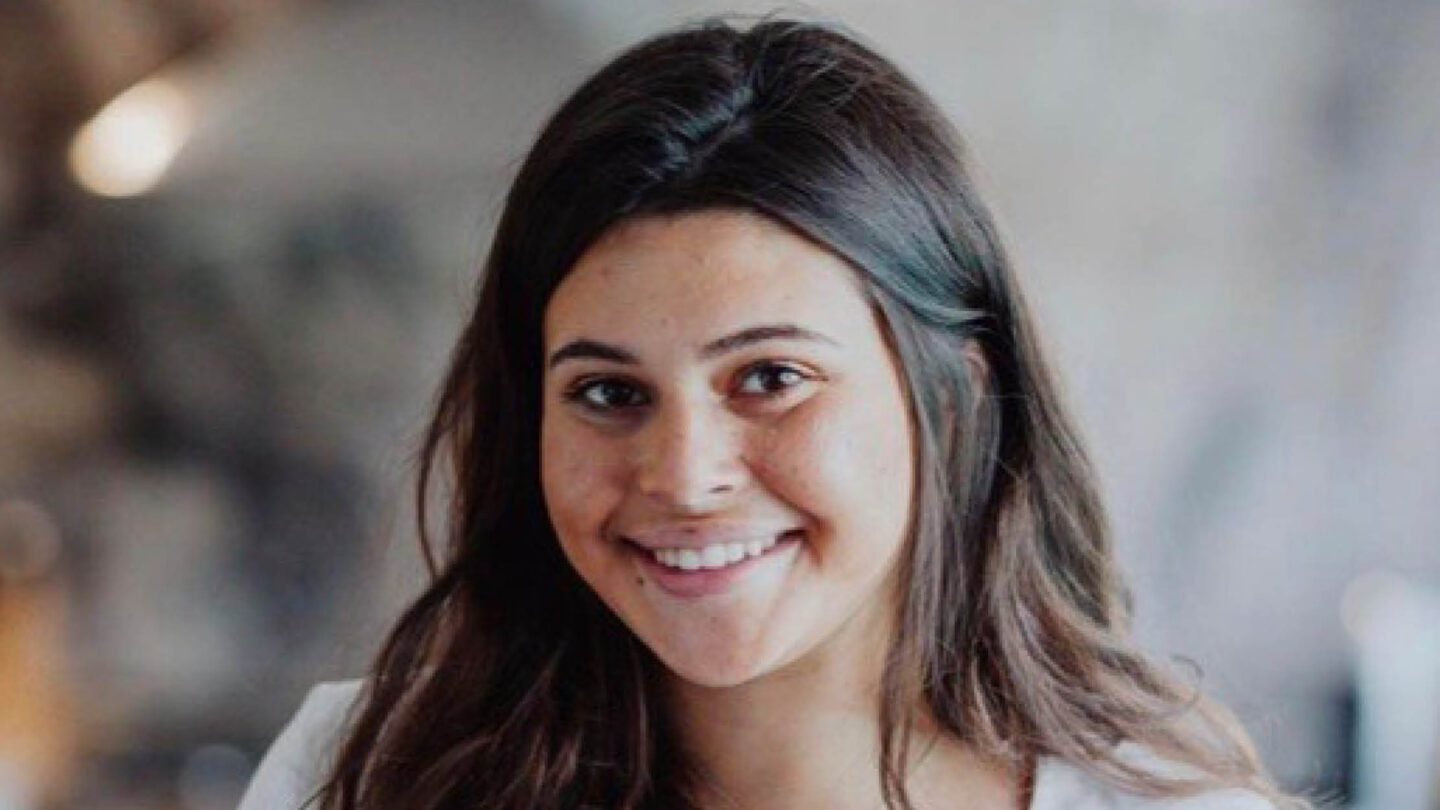


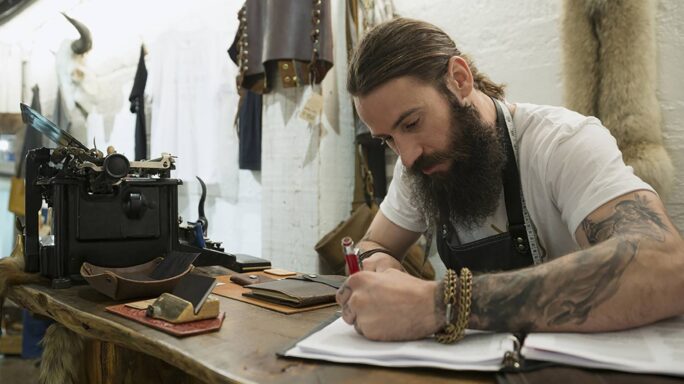
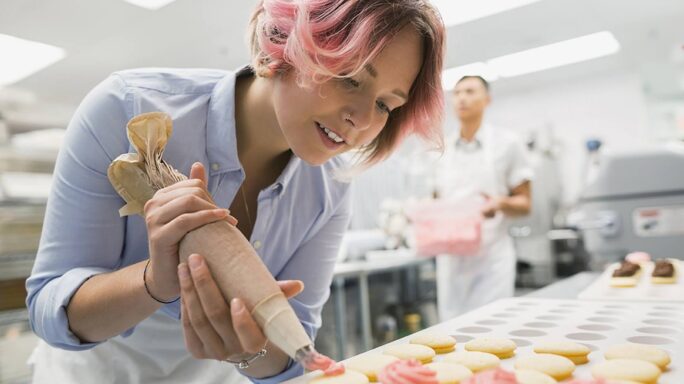
Ask the author a question or share your advice